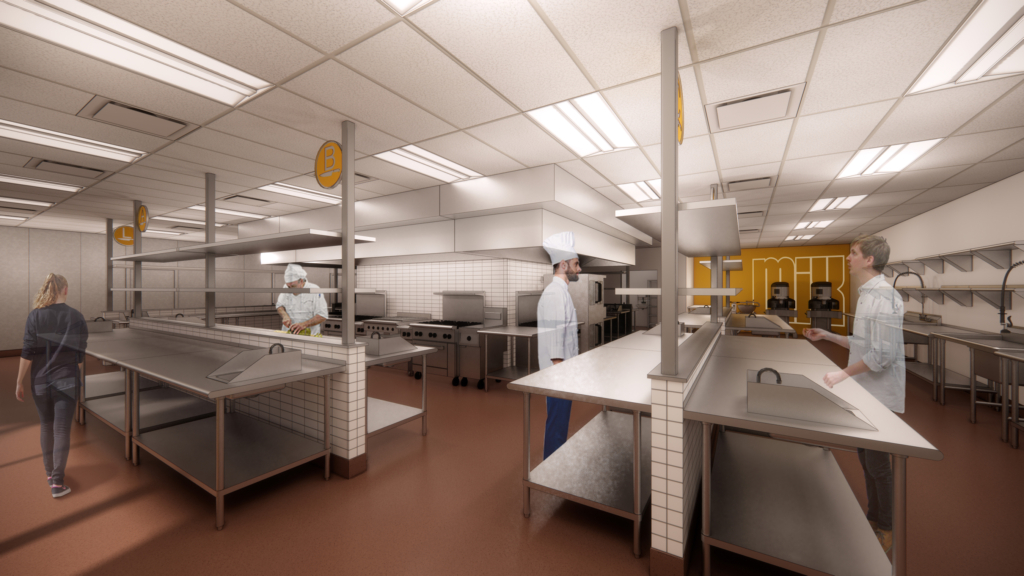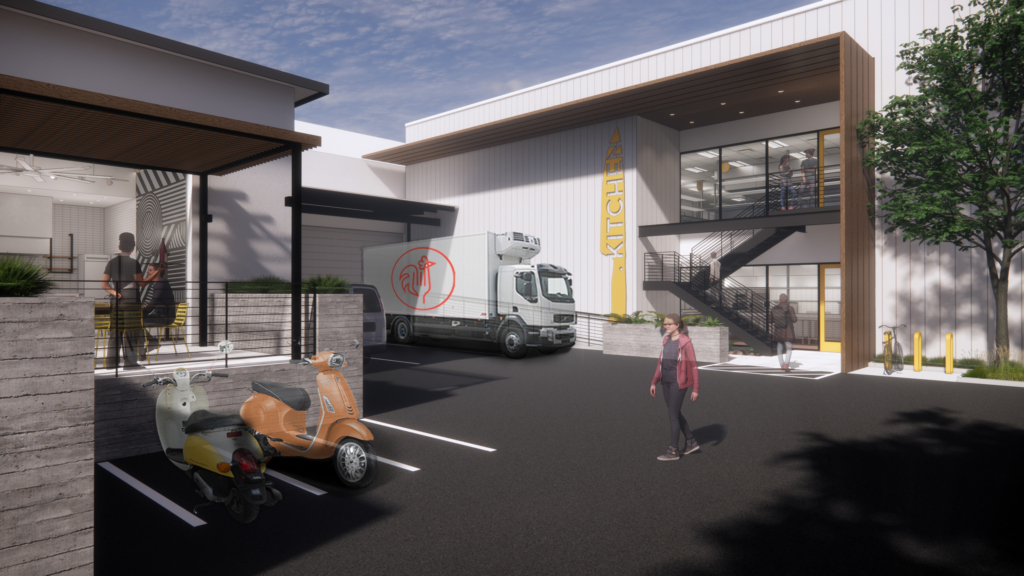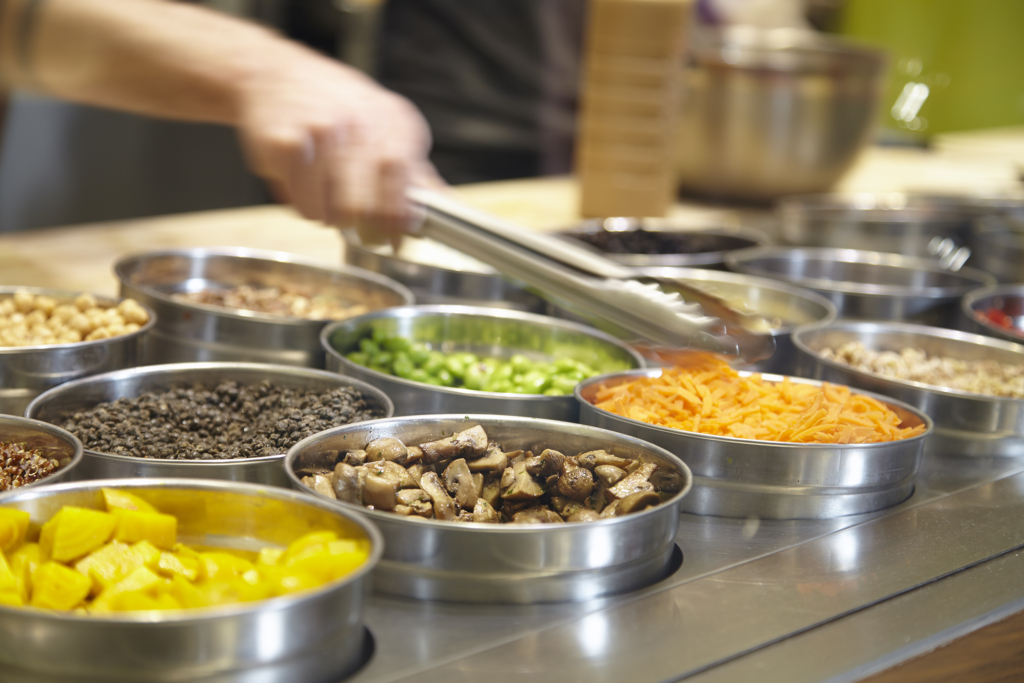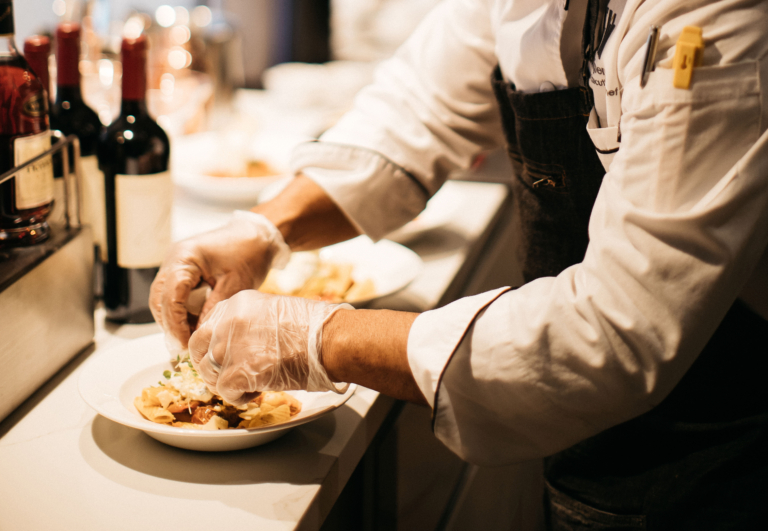As the food industry continues to get hit hard by COVID-19, many restaurants have had to pivot their business models seemingly overnight. Shifting focus from dine-in operations to pick-up and delivery may seem like a daunting task amid a crisis. Restaurants and food companies, however, are creatively streamlining and growing their takeout and delivery methods in these unprecedented times.
Another promising revenue stream can be found in the rising trend of ghost kitchens, also known as dark kitchens and virtual kitchens. This model can reduce the costs of real estate, labor and menu innovation by transforming the traditional restaurant framework to accommodate off-premise food sales. Instead of indoor dining, deliveries made by the restaurant or by a third-party service are the mainstay.
These facilities found their niche as shelter-in-place orders forced operators nationwide to close their dining areas, but ghost kitchens are far more than a passing trend. According to the foodservice research group Technomic insiders expect the boom in ghost kitchens to likely outlast the pandemic, with sales via ghost restaurants from facilities in the United States projected to rise 25% each year for the next 5 years—an estimated $300 million in yearly sales. Even fast food vendors such as Wendy’s announced they will use cloud or ghost kitchens as a significant part of their chain’s expansion strategy. The fast food chain is joining other operators such as Chick-Fil-A to boost their delivery sales using shared production kitchens.

The Market Hall Concept To-Go
There are distinct approaches to running a ghost kitchen, ranging from delivery only from a pre-existing restaurant space, to creating a new commissary-style kitchen that can house multiple brands or chefs. Phoenix-based, Kitchen United Mix, hosts multiple restaurant brands, such as Boston Market, PF Chang’s and Island Loco, at a single location for takeout or delivery. Like the market hall concept, all the restaurants share commercial kitchen space under one roof with specialized suites. This enables companies to expand their customer base with limited up-front costs and be an incubator for new food concepts or up-and-coming restaurateurs.
Delivery Platforms
As technology advances, delivery apps and websites continue to positively impact restaurant operations. Digital management companies for online ordering, such as Tock combine e-tools for operators to organize delivery and pick up, along with contactless payment all on one platform. Tock To Go is an app that facilitates restaurants in pivoting easily to a takeout order model, was launched shortly after dine-in restrictions began. Over the last few months, Tock’s to-go service allowed restaurants, including many popular five-star establishments that did not typically offer takeout and delivery, to sell meal kits, to-go packs, groceries and pre-packaged foods, helping them weather the shutdown stage.

Co-Working Model and Community
One ghost kitchen model that maintains the communal experience is Bridge Kitchen in Richmond, CA. Bridge Kitchen is a membership based, local, community-focused facility that offers a shared kitchen with co-working desks for food tenants, a video production facility, art gallery and event space. Members support the local community by hosting cooking lessons, demonstrations, and food pop-ups. Bridge Kitchen also assists members in setting up a business, website e-commerce and marketing planning.
As a testament to their commitment of supporting local community during this pandemic, Bridge Kitchen is relaxing fees and rental fees normally charged to their members according to Kitchen Manager Phillip Mitchell. “We’ll have one-on-one conversations with folks to see what they can pay and look at helping them out, particularly if they’re doing it for a good purpose,” said Mitchell. “We want to be a part to helping getting food to the ones that need it.”
Our client, Fulcrum Group in Daly City, CA, an event planning business, plans to build a membership service unique for event planners, providing everything from event space to party rentals. Fulcrum expects to offer their members an in-house ghost kitchen catering facility, and access to flexible and private office space, a large indoor showroom and event space with an outdoor patio to host tastings and events.
“There’s a benefit to the economies of scale of having this kind of ecosystem,” said Fulcrum Group’s Chairman, Michael Seramin. “The cross promotion and cost savings of not having your own kitchen or office or venue helps to minimize the capital expense while still having access to the event inventory you need.”
This model of co-housing restaurants, food vendors and a venue for social gathering offers a uniquely community-based experience, similar to community gardens in many urban cities. These collective neighborhood spaces have long shown the physical, mental and health benefits of improved social well-being through strengthening social connections.

Maximizing the Potential of Underutilized Space
As this trend in dining out grows, ghost kitchens are viewed by larger companies as a way to activate underutilized real estate. One such company, C3 or Creative Culinary Communities – a delivery-focused, hybrid ghost kitchen and brick and mortar food hall platform – is planning to locate up to 200 kitchens in underutilized retail malls throughout the country and to lease space to ghost kitchen operators like Cloud Kitchens who are operated by former Uber CEO Travis Kalanick.
C3, part of the New York-based SBE Entertainment Group, has created a partnership with retail developer Simon, and the Accor Hospitality Group. Given the group’s background in hospitality and high-end shopping centers their goal is to create curated collections of food offerings as well as brick-and-mortar restaurants and bars. They will now be showcasing celebrity international chef Dani Garcia’s first two restaurant concepts in the United States in both virtual and brick and mortar formats.
A Resilient Industry
There is no question that the pandemic has been devastating to the restaurant and hospitality industry. Several independent restaurants have permanently closed, unemployment is sky high and even upon reopening, capacity restrictions will severely impact profitability.
As we move forward post-pandemic, the restaurant industry will be even more resilient and creative with their use of shared or ghost kitchen facilities. Many of these e-options to delivery-only dining allow us to connect easily, and immediately, with our favorite restaurant online. But will “dining at home” fatigue, along with the need for in-person social interaction, eventually set in? And when that happens, will traditional dining models that provide a sense of community win out over convenience? Stay tuned.
Interested in learning more, or have a project you’d like to collaborate on? We’re happy to help bring your project to life! Contact us to start the conversation.
Written by Steven Lovell, AIA
Contributors: William Duff, AIA, LEED AP; David K. Plotkin, AIA, LEED AP, NCARB; Neil Ginty, Architect; Jonathan Tsurui; Chris Telles, Architect; Sarah Mergy; Wendy Osaki; Brenna Daugherty
